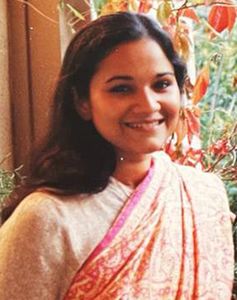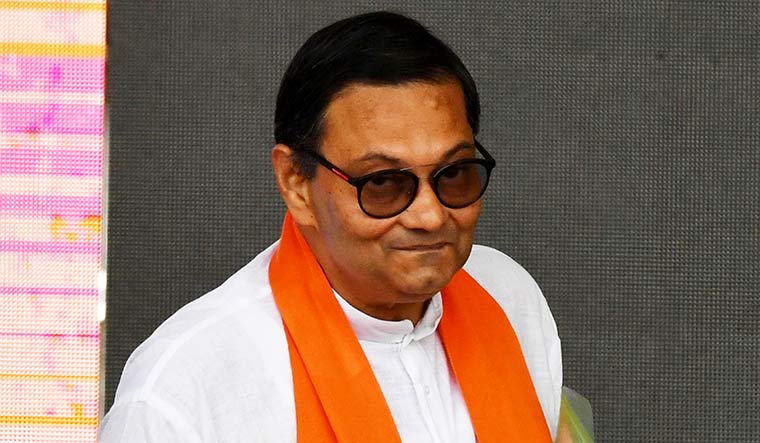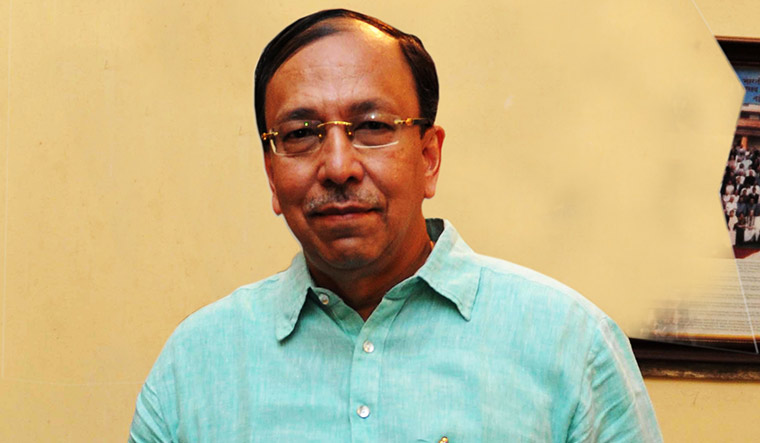His death divided his family for more than 70 years. Finally, the family of Netaji Subhas Chandra Bose has accepted that he died following an airplane crash at Taihoku in Formosa (now Taiwan) on August 18, 1945.
Everyone in the Bose family except his nephew Sisir, Sisir’s wife Krishna and son Sugata had rejected the air crash theory. The theory did not find much acceptance in Bengal and rest of the country, too. To add to it, there were conspiracy theories, that he had escaped the crash and fled to Russia, and unconfirmed sightings in different parts of the world, sometimes as a prisoner in a Russian gulag or as a godman in Uttar Pradesh.
Chandra Kumar Bose, Bose’s grandnephew and chairman of the Netaji Mission, told THE WEEK, “We are very sad that we believed certain theories for all these years. It is [a] bitter truth that we would have to accept that Netaji died due to air crash.” Chandra Kumar is the grandson of Bose’s elder brother and closest ally Sarat Chandra Bose. The two brothers fled Kolkata together. Sisir is said to have helped them in their escape in 1941.
Chandra Kumar’s sister Madhuri is an advocate with a United Nations agency. “I have no doubt that Netaji died following the air crash,” she told THE WEEK from Geneva. “I have also recently found clear evidence of his death in the British Library, London.”
The evidence she found also concerns her grandfather. “The British Indian government was determined not to release Sarat Chandra Bose, who was detained in Coonoor (since December 1941), until and unless they were certain that Subhas Bose was dead,” said Madhuri. “Therefore, they made all the inquiries necessary to be certain that Bose was no longer alive. When they were certain, they released Sarat Chandra Bose in September 1945. I have this information in writing, which will be released in a book on Sarat Chandra Bose, to be published by Routledge soon.”
But this is not new information. It is all available in 304 files declassified by the Narendra Modi government in 2016. And, the recent change of mind in the Bose family could be attributed to those very files.
The Netaji Mission set up a committee, headed by engineering professor and Netaji researcher Sumeru Roy Chowdhury, to review the declassified files. “The declassified files were from the Prime Minister’s Office, ministry of defence, cabinet secretariat and, more importantly, the ministry of external affairs, which comprised some foreign investigations—[unveiled] for the first time—regarding the disappearance of Netaji since the air crash,” said Roy Chowdhury.
Files related to Netaji were declassified twice earlier—in 1997 by the H.D. Deve Gowda government (990 files) and in 2012 by the Manmohan Singh government (1,030 files). The files declassified by the Gowda government were mostly from the ministry of defence, and those declassified by the Manmohan Singh government were from the ministries of home and defence.
Prime minister P.V. Narasimha Rao, too, had tried to declassify the Netaji files. “Bureaucrats prevented it saying it would invite unnecessary provocation across the country,” said Roy Chowdhury.
Bose’s death has been a political issue ever since independence. Prime minister Jawaharlal Nehru constituted the Shah Nawaz committee in 1956, and many close associates of Bose deposed before it. Bose’s brother Suresh was one of its members. Suresh rejected the committee’s report, which accepted the air crash theory. He said it was politically motivated. Prime minister Indira Gandhi constituted the G.D. Khosla commission in 1970, which reiterated the findings of the Shah Nawaz committee report. But these did little to quash the conspiracy theories.
In 1999, as directed by the Calcutta High Court, the Atal Bihari Vajpayee government instituted the Justice Mukherjee commission, which said that Bose did not die in the plane crash and that the ashes in a temple in Tokyo were not his. The report was rejected by the Manmohan Singh government.
Prime minister Morarji Desai refused to set up a committee, saying it would be a waste of money and time. However, former MP Prof Samar Guha, a close associate of Bose, persuaded Morarji to reject the Khosla commission findings.
The last lot of declassified files made public by the Modi government put a lot of speculation to rest. These files include investigations not just by foreign governments but also by the Indian Independence League (IIL), the civil administration of Netaji’s Indian National Army.
The first foreign report came from the Japanese government, which was made 12 days after the crash at Japanese-occupied Taihoku. It had eyewitness accounts and opinions of medics, paramedics and local administration. It confirmed that Bose died following the air crash.
“Lord Mountbatten asked US army general [Douglas] MacArthur to access the report. But the British could get the report only after the fall of Japan,” said Roy Chowdhury. India could access the Japanese report much later. The British government, too, conducted a probe after the fall of Japan, said Roy Chowdhury, which confirmed the air crash theory in July 1946. The war correspondence of the United States with the British, too, confirmed the same. The fourth concrete report, according to Roy Chowdhury, was prepared by the US Central Intelligence Agency. It said that Bose did not survive the crash in Taiwan. “After that report, the Allied Forces stopped chasing Bose,” said Roy Chowdhury. “Netaji was termed as dead by the Americans in its future correspondence with the British government.”
If one disputes these reports as western propaganda, then Roy Chowdhury points to the IIL report (1953). It not only accepts the crash theory but also reveals that a faction in the Japanese government, which was soft towards the Allied Forces, had allegedly plotted Bose’s death in the plane crash. The report says Japanese military officer Colonel Kagowa did coordinate with MacArthur and served as liaison officer with “enemy force”.
The Indian independence movement was at its peak then, and Bose wanted to return to India with Japanese help. The British were worried that his return would strengthen the freedom struggle. “Hence the diversion of the route of the plane in which Netaji travelled,” said the report. Bose had travelled from Bangkok to Saigon with six INA men. But from Saigon to Taihoku, he was allowed only to take one officer with him. “The act of leaving Captain Gulzara Singh, Col Pritam Singh, Major Abid Hassan and others at Saigon against the wish of Netaji and ourselves was a calculated plan,” read the report. “The facility extended to Shri S.A. Aiyer (another close ally of Bose) to proceed to Tokyo directly was a premeditated plan…. They allowed only one officer (Col Habibur Rahman) with Netaji to keep him as a witness.”
From Taihoku, Bose and Rahman were headed to Dairen in Manchuria along with General Tsunamasa Shidei. The plane took off after refuelling only to crash within moments of being airborne. According to the report, the Japanese saw to it that the plane crash was not a full-blown one. They ensured it was “a short fall, manipulated only to cause bodily injuries to passengers”. They did so because they wanted Rahman to be a witness to the “death of Netaji caused by a plane accident”.
This laid to rest a conspiracy theory that Bose had fled to the Soviet Union. It is true that Bose wanted to go to Russia from Japan and had sought help from the Japanese. But the Japanese government, while wishing him luck in his fight for liberation of India, wrote to Bose, saying, “Nippon government deems it almost without hope of success to get directly in touch with Soviet government on behalf of Your Excellency and it has no intention in doing so.” Roy Chowdhury said that Japan feared if it helped Bose to reach Russia, India would become a totally communist country post independence.
On the revelation that Japanese rebels might have orchestrated Bose’s tragic end, Chandra Kumar said, “We never imagined that before. Now it is very likely that he may not have died during the crash but because of its impact. We don’t rule out overdose of medicine at the hospital, which could have caused his death.”
Chandra Kumar accepted that many made money from the conspiracies surrounding Bose’s death. “Many films were made,” he said. “Many people were blamed. Time has come to correct all mistakes. Many people duped our family to continue with their canard. We also got motivated as we had no information.”
Sugata Bose, a historian, said he stood vindicated. “I am not surprised,” said Sugata, professor of world history at Harvard University. “This information is nothing new to me. Every serious historian and scholar would know this. If you read my book—His Majesty’s Opponent—the last chapter talks about Netaji’s mortal end. My mother Krishna Bose’s book deals with the Taihoku tragedy. My father believed in the crash theory because he travelled to the place of the accident in 1965. I accompanied my mother on her trip in 2002 and read several material.”
He said the Shah Nawaz committee report was the most authentic Indian report, and that all rumours about Bose’s death should be put to rest. “These canards are very much insulting to Netaji,” he said. “All conspiracy theories should be rejected. Unfortunately, in India there will always be a few people who will deliberately profess this theory for some more time, I fear. But reasonable people should come to terms with Netaji’s mortal end and celebrate his life rather.”
The Netaji family, including his daughter Anita Bose Pfaff, has written to Modi to bring back his mortal remains for final detection and immersion of the ashes in the Ganga. “Why not? He was a devoted Hindu who admired Ramakrishna and Vivekananda,” said Chandra Kumar. “He used to offer puja to Ma Kali. We would also like his last rites to be done now. And, the chief minister of Bengal should take a lead for that, though she would not accept this crash theory for obvious reasons.”
The family is now calling out the Mukherjee Commission for rubbishing the plane crash theory. “I can say it (Mukherjee Commission) misleads to a great extent,” Anita Bose Pfaff told THE WEEK from Germany.
However, lawyer Keshab Bhattacharjee of the Calcutta High Court, who was one of the advisers to the Mukherjee Commission, said, “The Bose family is again being misled. I doubt whether they have any more respect left for Netaji.”





